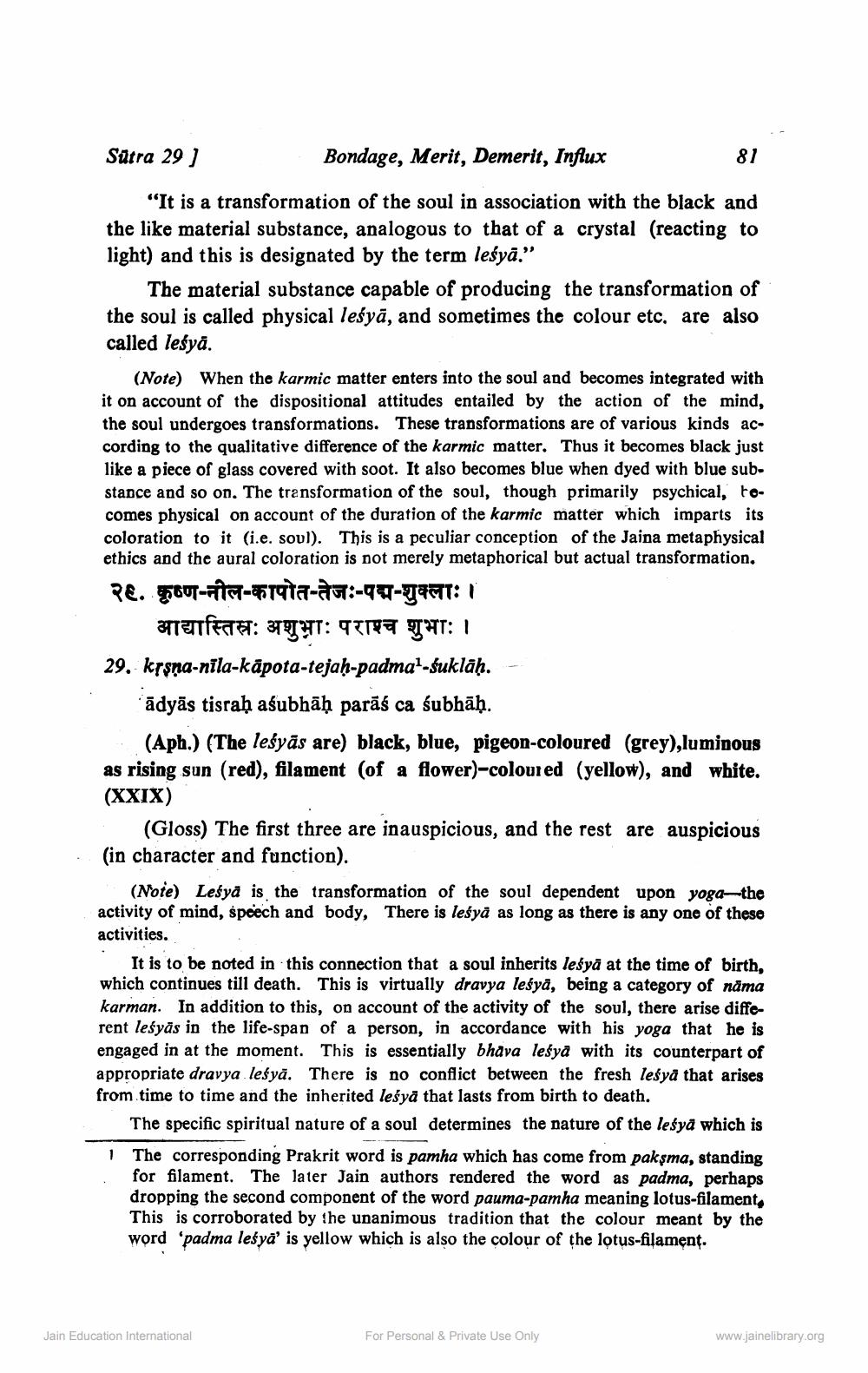________________
Sätra 29 ]
Bondage, Merit, Demerit, Influx
"It is a transformation of the soul in association with the black and the like material substance, analogous to that of a crystal (reacting to light) and this is designated by the term leśyā."
The material substance capable of producing the transformation of the soul is called physical leśyā, and sometimes the colour etc. are also called leśya.
(Note) When the karmic matter enters into the soul and becomes integrated with it on account of the dispositional attitudes entailed by the action of the mind, the soul undergoes transformations. These transformations are of various kinds according to the qualitative difference of the karmic matter. Thus it becomes black just like a piece of glass covered with soot. It also becomes blue when dyed with blue substance and so on. The transformation of the soul, though primarily psychical, tocomes physical on account of the duration of the karmic matter which imparts its coloration to it (i.e. soul). This is a peculiar conception of the Jaina metaphysical ethics and the aural coloration is not merely metaphorical but actual transformation. RE. FOU-199-lata-au:-49-9491: 1
आद्यास्तिस्रः अशुभाः पराश्च शुभाः । 29. krsna-nila-kāpota-tejah-padma -suklāḥ. -
ādyās tisraḥ aśubhāḥ parāś ca śubhāḥ.
(Aph.) (The leśyās are) black, blue, pigeon-coloured (grey),luminous as rising sun (red), filament (of a flower)-coloured (yellow), and white. (XXIX)
(Gloss) The first three are inauspicious, and the rest are auspicious (in character and function).
(Note) Lesya is the transformation of the soul dependent upon yoga-the activity of mind, speech and body, There is leśyā as long as there is any one of these activities.
It is to be noted in this connection that a soul inherits leśyā at the time of birth, which continues till death. This is virtually dravya leśyā, being a category of nama karman. In addition to this, on account of the activity of the soul, there arise different leśyās in the life-span of a person, in accordance with his yoga that he is engaged in at the moment. This is essentially bhava leśya with its counterpart of appropriate dravya leśyā. There is no conflict between the fresh leśya that arises from time to time and the inherited lesyà that lasts from birth to death.
The specific spiritual nature of a soul determines the nature of the leśyā which is 1 The corresponding Prakrit word is pamha which has come from paksma, standing
for filament. The later Jain authors rendered the word as padma, perhaps dropping the second component of the word pauma-pamha meaning lotus-filamente This is corroborated by the unanimous tradition that the colour meant by the word 'padma leśya' is yellow which is also the colour of the lotus-filament.
Jain Education International
For Personal & Private Use Only
www.jainelibrary.org




